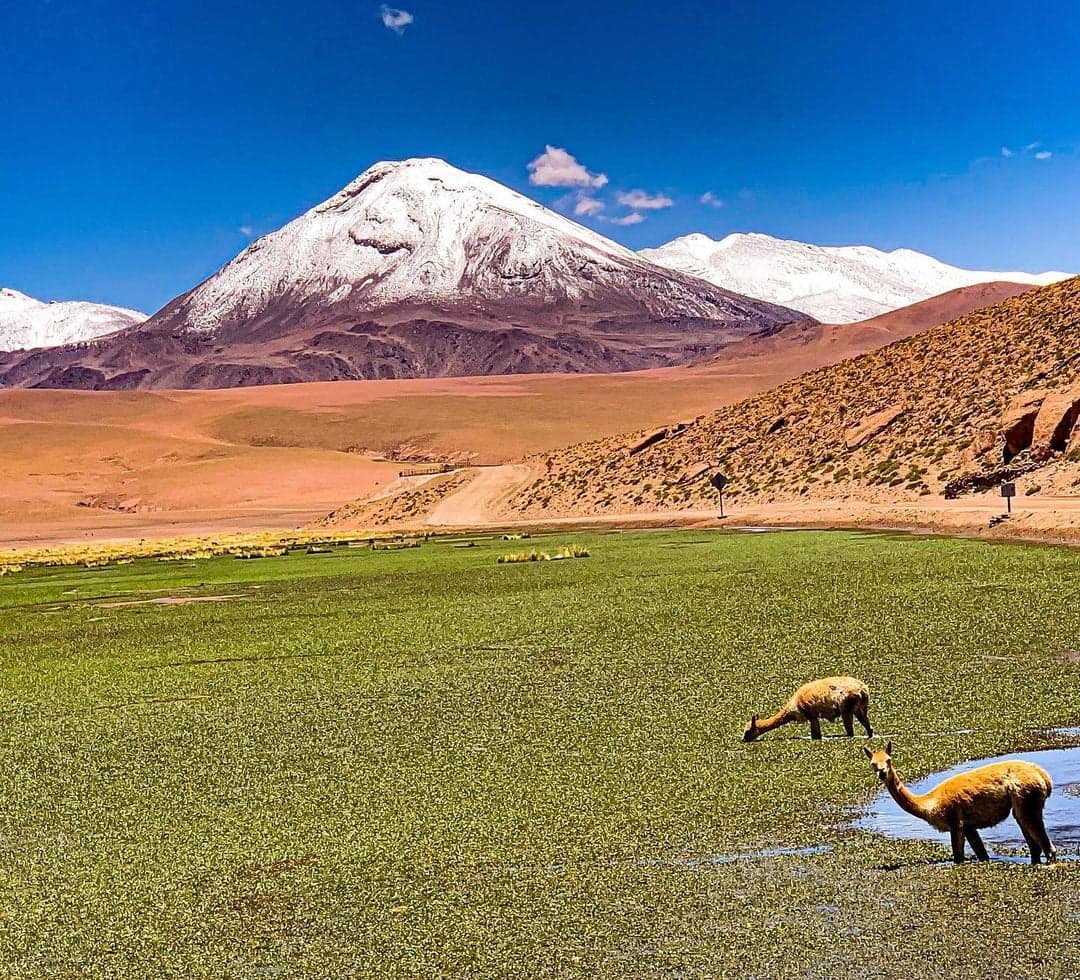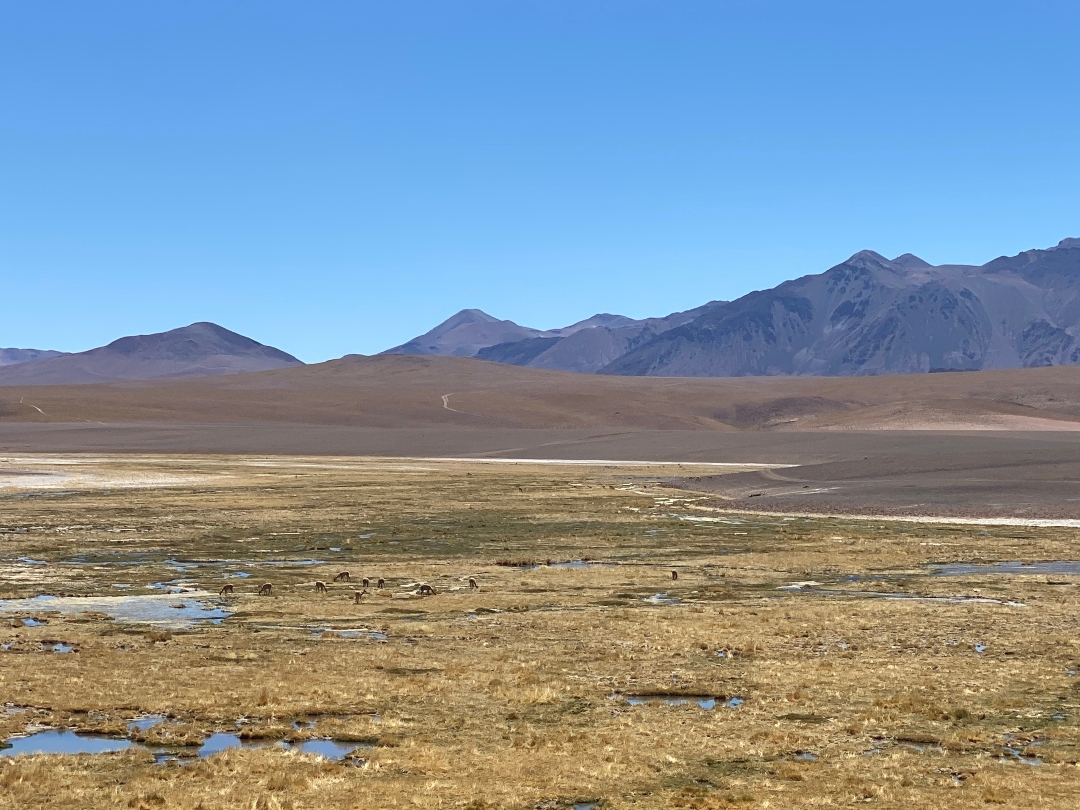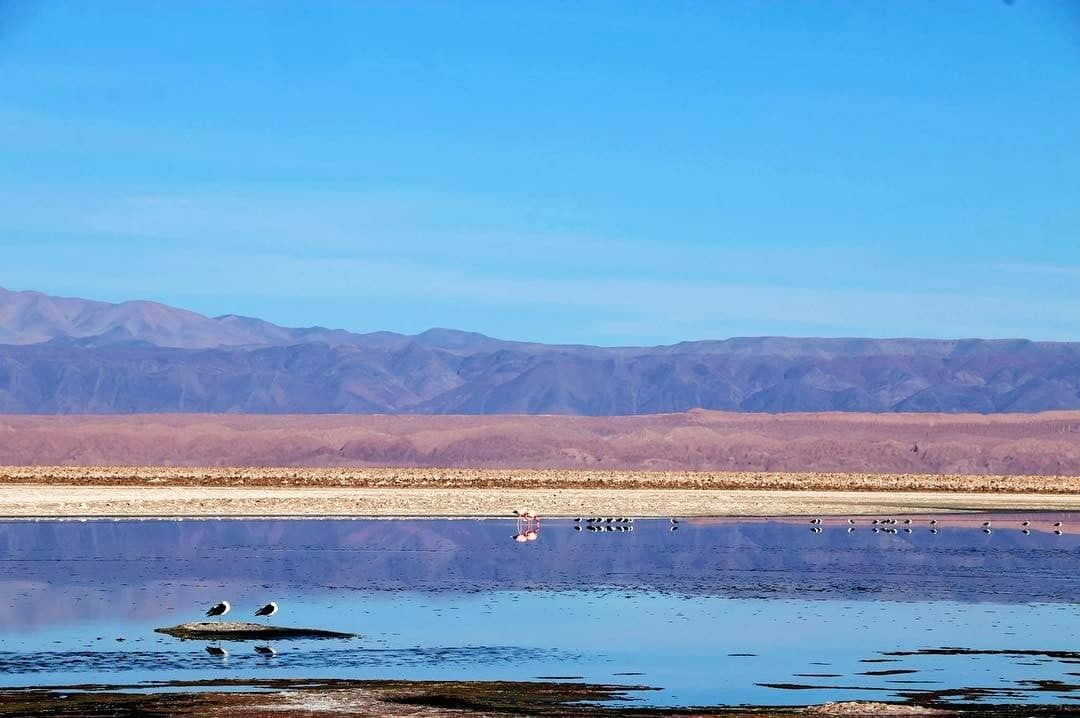GREEN TOURISM! ECO-ROUTES IN THE ATACAMA DESERT
By: Chile Travel - 28 August, 2021

Magical and natural places in San Pedro de Atacama
If you’re a traveler who loves nature and ecotourism, appreciates visiting each place with absolute respect for the environment, prefers destinations that still aren’t overcrowded and are fond of small local businesses, this note is for you.
What is Green Tourism?
Green Tourism involves having a strong commitment for the environment and taking care of it with simple rules such as not feeding the native fauna or cutting the native flora, respecting the marked trails, camping at the indicated campsites and, in certain National Parks or protected areas, not bringing pets.
Foto: Vida salvaje en el Altiplano- Los Bofedales/ @cima_outdoor_adventure_life
Atacama Route Itinerary
We invite you to tour the Atacama Desert in a different way, so you can discover some of the less visited but by no means less special places. Here we suggest some examples of exclusive routes and excursions to little known places within the most arid, ancient and diverse desert in the world. Follow our Atacama Route Itinerary!
Explore the Park that leads to the tallest active volcano in South America!
Our itinerary of the Atacama Route begins in the beautiful Nevado Tres Cruces National Park, located three hours from the city of Copiapó towards the mountains. We feel great pride in highlighting this place because the tallest active volcano in South America, the incredible “Nevado Ojos del Salado”, is located here.
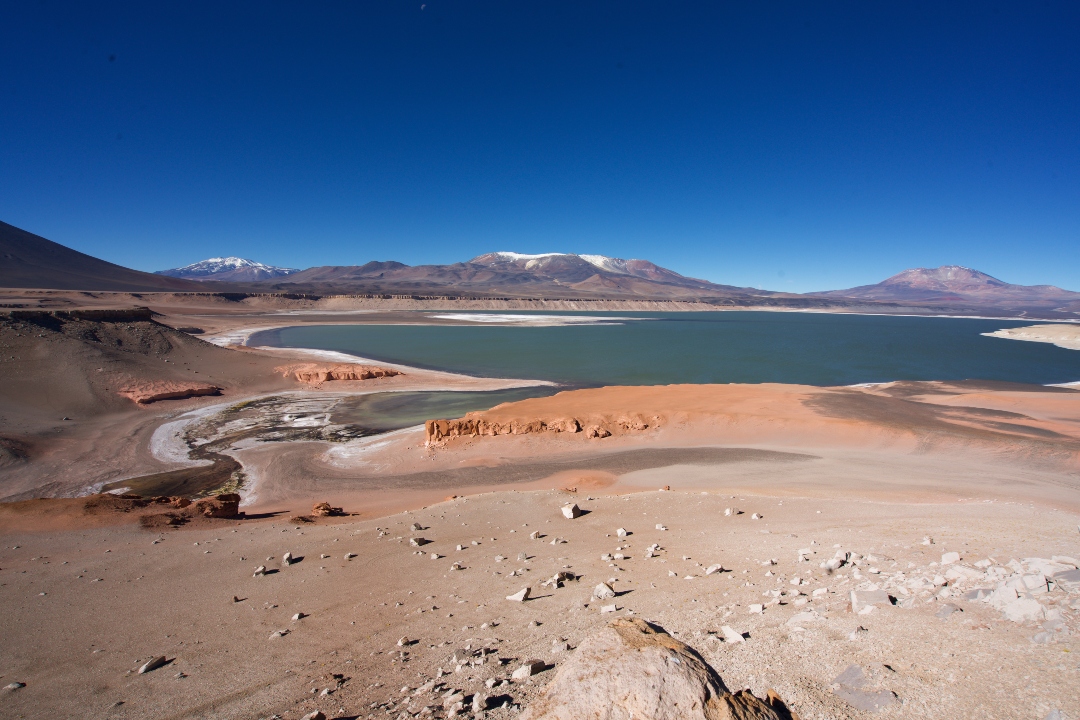
foto: Ojos del Salado/ banco audiovisual Sernatur
The park’s most attractive trails are those that lead to the Negro Francisco and the Santa Rosa lagoons, from where you can observe the towering peaks and, most notably, the majestic Nevado Ojos del Salado volcano, which rises over 6,800 meters. The ascent, though not difficult, requires a lot of preparation and good physical condition. The Nevado de Tres Cruces National Park invites you to go hiking, mountaineering, biking or rock climbing around the volcano. Exciting, right?
Nevado Tres Cruces National Park is our first stop on the Atacama Route and is currently open for ecotourism, but restricted to 50 people daily. It is open Monday to Friday from 10:00 a.m. to 4:00 p.m. We recommend going there in a 4×4 truck, and the best time to visit is in spring or summer (September to March) because the route can be affected by rain and snow during the winter or fall.
Can one camp at the Nevado Tres Cruces National Park?
Of course you can! You can camp in the designated areas and there is also a shelter in the Negro Francisco sector that is fully equipped for spending the night, but you must bring your own water since the place does not have drinking water. Solar panels provide electricity to the campsite, giving it a natural and magical touch and allowing you to be delighted by the trillions of stars that adorn the sky.
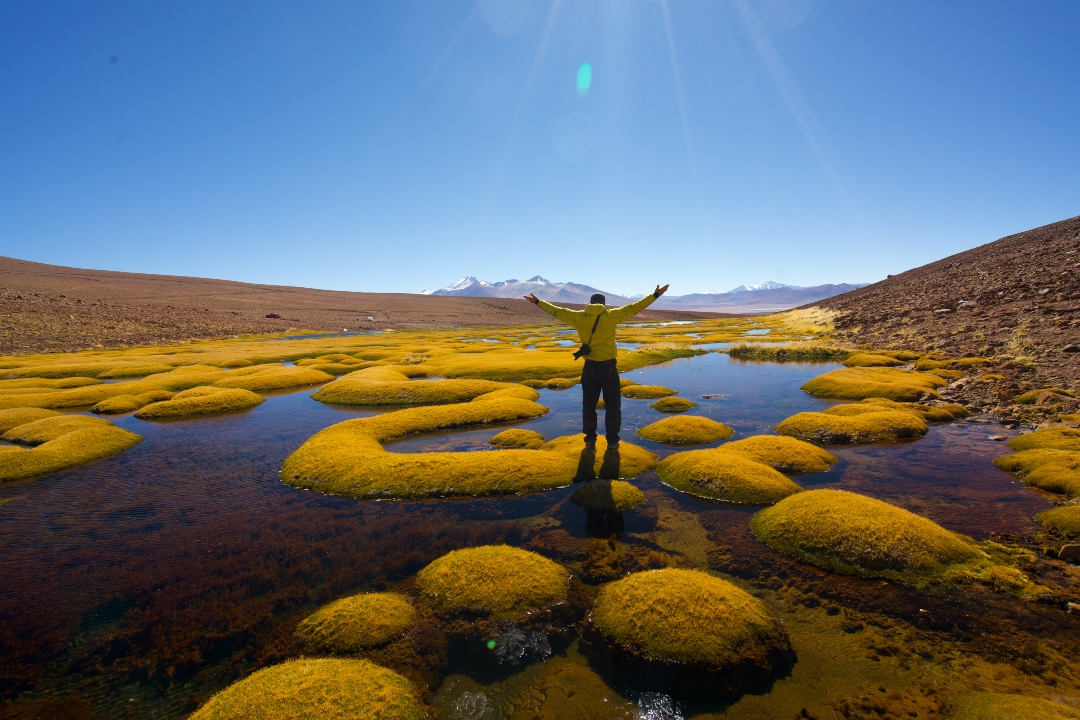
Foto: Ojos del Salado/ banco audiovisual Sernatur
San Pedro de Atacama, a unique place on Earth
Continuing on this incredible route towards the north of Chile, you will reach the green lung of the Atacama Desert, a place you cannot miss: the mystical San Pedro de Atacama. It’s a small town in the middle of the most arid place on Earth, but because it’s located on the banks of the Loa River, it’s surrounded by giant green carob trees called chañares and an abundance of native flora. A true oasis in the middle of the desert!
Photo: Oasis in the Atacama Desert / photo donated by @javimansur
San Pedro de Atacama is the very heart of tourism in northern Chile thanks to its natural environment offering so many different attractions, from salt flats to rivers, hot springs, volcanoes, geysers and routes exclusive to “eco-tourists” like you, who seek to engage in activities in the midst of nature and enjoy the breathtaking silence of the desert.
One of these routes is in the Quebrada del Diablo (Devil’s Gorge) in the Valley of Catarpe, located only 8 km from town. If you love doing sports, then you will want to go by bike. You can rent a bike in the town of San Pedro or you can drive there and pay an entrance fee of 3,000 Chilean pesos per person. The best time to visit is between 8 and 9 a.m. since that’s the time with the best light revealing a number of prehistoric figures on the clay walls that tower across this valley.
Don’t forget to bring your water bottle, your swimsuit and plenty of sunscreen to take a refreshing dip in the Loa River. You will never regret a single moment of this beautiful experience in Catarpe. The entrance is through the Garganta del Diablo (Devil’s Throat). A trail full of curves with crevices and streaks of quartz and salt awaits you.
Photo: Tatio Geisers / instagram @cima_outdoor_adventure_life
The El Tatio Geysers, the greatest geo-thermal field in South America
Another one of the jewels of the Atacama Route is the El Tatio Geysers. Get up at dawn to see the biggest geyser field in South America and the third biggest in the world in action! Between 6 and 7 in the morning, impressive fumaroles of steam and boiling water are at their peak. You won’t want to miss this spectacle. It’s a truly magnificent gift of nature.
El Tatio, which in the Atacameño language means “the weeping grandfather”, is a geothermal field where boiling water and steam sprout from the Earth through a number of geological faults. The pressure launches the water as high as 20 meters in the air, while curtains of steam rise over the entire site, making it a unique landscape and a wonderful spectacle.
Located 4,200 meters above sea level, and about an hour and a half from the town of San Pedro de Atacama, this group of approximately 80 geysers is the largest in the southern hemisphere and the third largest in the world, after Yellowstone in the United States and the Kronotski Nature Reserve in Russia.
You will have a most spectacular morning!! And since you’ve already gotten up so early, you can take advantage of the rest of the morning to see the local fauna including vicuñas, viscachas and ñandú (“rhea”) that inhabit the surrounding area, while you relax in the outdoor hot springs. Continue the day with a visit to another must-see on the Atacama Route, the Salar de Atacama.
Photo: Oasis in San Pedro de Atacama / instagram @mauricionarea
Chaxa, Cejar and Ojos del Salar, mirrors of water in the Atacama Desert
The Salar de Atacama (salt flat) is an amazing 90 kilometer stretch of salt and lithium, the largest in Chile and one of the largest salt deposits in the world. Along with El Tatio, it is one of the places most visited by tourists who come to the Atacama Desert.
Many people come here, but few know about the great preservation risk this destination faces, mainly due to huge mining companies interested in extracting its mineral wealth. That’s why it’s so important to make this salt flat better known, to protect and respect it, to help preserve its ecosystem for many more generations to be able to enjoy this incredible gift of nature.
The extraordinary beauty of the Chaxa, Cejar and Ojos del Salar lagoons are the main attractions. These turquoise lagoons are like water mirrors that reflect the stars in the middle of a white salt landscape.
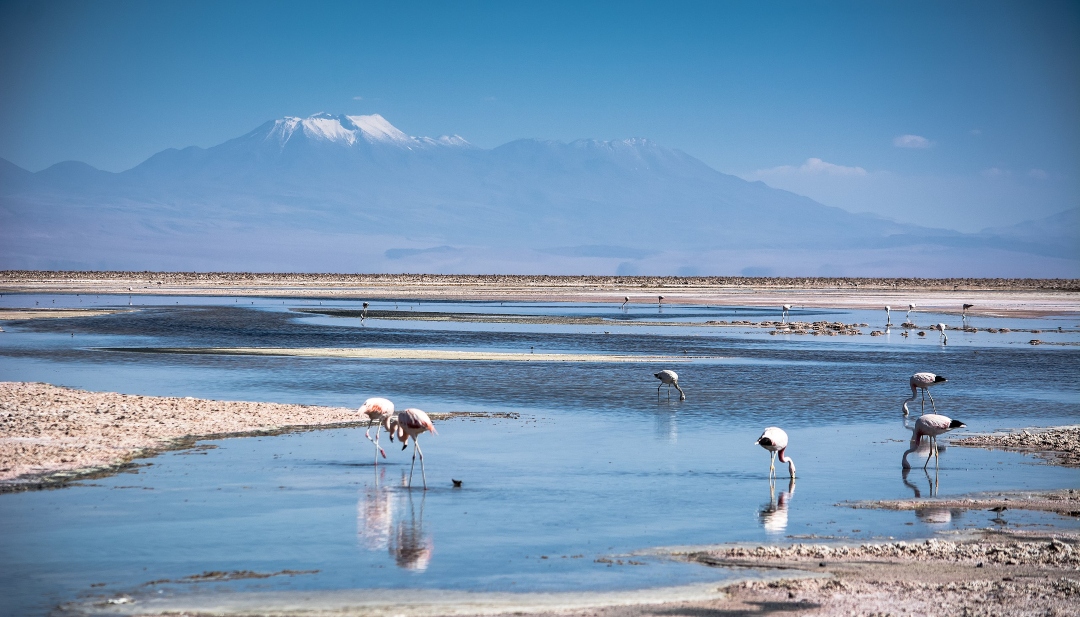
Photo: Royalty free Wikipedia
We recommend that you visit the Atacama Salt Flat after lunch, and start your excursion at the Cejar lagoon, a water mirror where you can soak and recharge your batteries. You won´t even need to swim, because you will effortlessly float thanks to the large amounts of salt in the water! After that, go to Ojos del Salar (Eyes of the Salt Flat), where there are two identical pools of fresh water in the middle of the desert. You can also swim here.
And there’s more! Why not end your day with a beautiful sunset at the Chaxa Lagoon? As day turns to night, the enchantment of stargazing is enhanced by simply looking into the mirror of salty water that reflects all the sky’s colors onto the Earth.
This is where our Atacama Route ends, an absolutely cosmic experience!!
Thank you Chilean desert for giving us so much wild nature of unparalleled beauty! Dear Eco-tourism lovers, be part of the best way to travel: with awareness, respect, deep admiration and care for our planet.
















